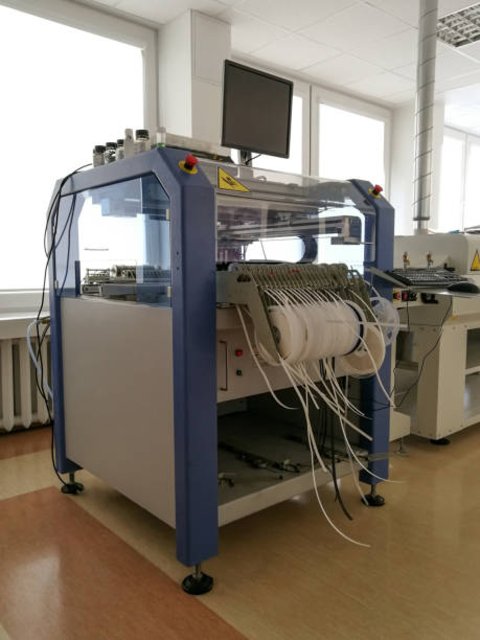Just how to Select the Appropriate SMT Pick-and-Place Maker for Your PCB Production Line?

When it comes to setting up printed circuit card (PCB) successfully, the pick-and-place maker is the heart of your surface area place innovation (SMT) line. These makers automate the positioning of Surface Mount Devices (SMD) with rate and precision, significantly improving performance and quality in modern-day electronic devices manufacturing. But with a large range of choices out there from compact models for model to rapid makers for automation selecting the best SMT pick-and-place maker can be discouraging. Understand Your PCB Manufacturing Volume and Complexity The initial step in choosing the right smt pick and place machine is evaluating your production quantity and the intricacy of your PCB layouts. If you're running small sets or prototypes, a manual or semi-automatic SMD pick-and-place equipment may be sufficient. When it comes to mid to high-volume production, an automated pick-and-place equipment is vital to meet throughput and consistency needs. Furthermore, take into consideration the selection of Surface Mount Devices (SMD) you utilize. Complex boards along with fine-pitch parts, BGAs, or mini elements require a maker with high precision, progressed vision systems, and fine positioning capability. Examine Speed vs. Precision Trade-Offs Certainly not all pick-and-place equipments are developed equivalent. Some are developed for blazing-fast rates with modest precision, while others focus on ultra-fine placement for miniaturized parts. The placement rate (determined in elements per hour, or CPH) can range from a few thousand to over 100,000 CPH relying on the device's ability. If your PCB assembly line prioritizes higher throughput over tight resistances, you may lean toward a high-speed version. Nevertheless, for products like clinical tools or aerospace electronics, where precision is extremely important, choose an smt pick and place machine that emphasizes accuracy, also at the price of speed. Examine Feeder Ability and Flexibility Feeder capability describes the number of various elements the machine can deal with in a single run. For assemblies with a huge costs of materials (BOM), your maker requires to suit a higher number of feeders. Likewise, look for adaptability in feeder kinds some makers can manage tape, tube, tray, and even bulk feeders, which widens your component dealing with capabilities. Advanced models also enable feeder resumption without stopping production, which substantially boosts uptime in continual production environments. Examine Software and Integration Capacities A modern automated pick-and-place equipment should come with instinctive, easy to use software that allows for very easy shows, CAD import, and real-time process surveillance. Integration with various other SMT devices such as pattern printers, reflow ovens, and examination bodies is crucial for a totally optimized production line. SMD and place machine supply Market 4.0 attributes like remote diagnostics, anticipating upkeep alerts, and production analytics, which can enhance overall efficiency and responsible. Conclusion Picking the right SMT pick-and-place machine is a vital choice that directly impacts your PCB production line's efficiency, scalability, and item quality. By taking into consideration production volume, machine speed and accuracy, feeder options, software application integration, and total expense of possession, you can make a well-informed financial investment that meets your current demands and future development. No matter if you're setting up fundamental PCBs or high-density electronic boards, the appropriate pick-and-place system will certainly simplify your procedure and maintain your manufacturing competitive.